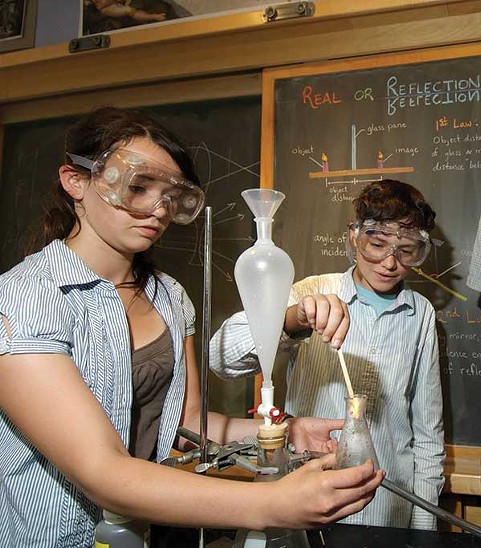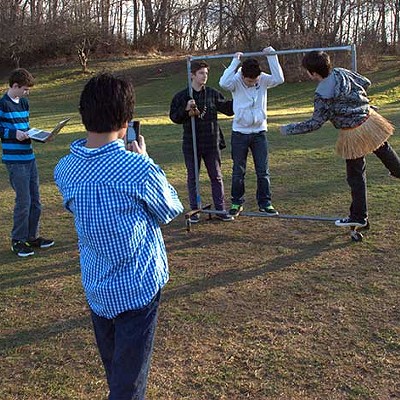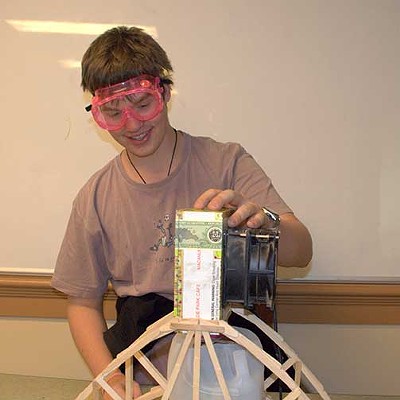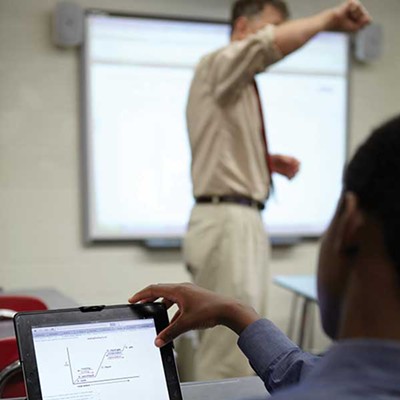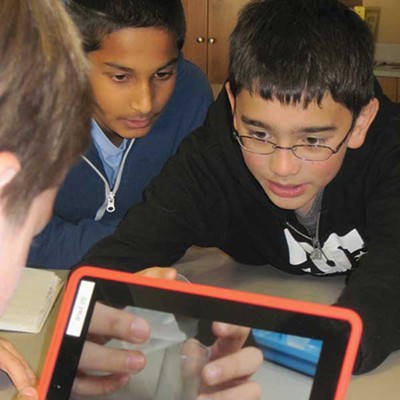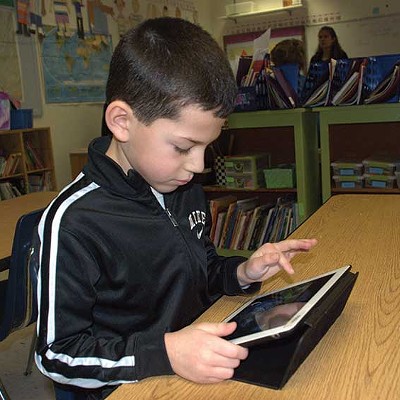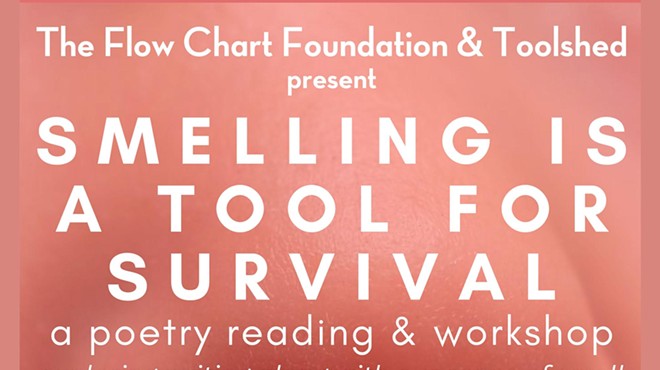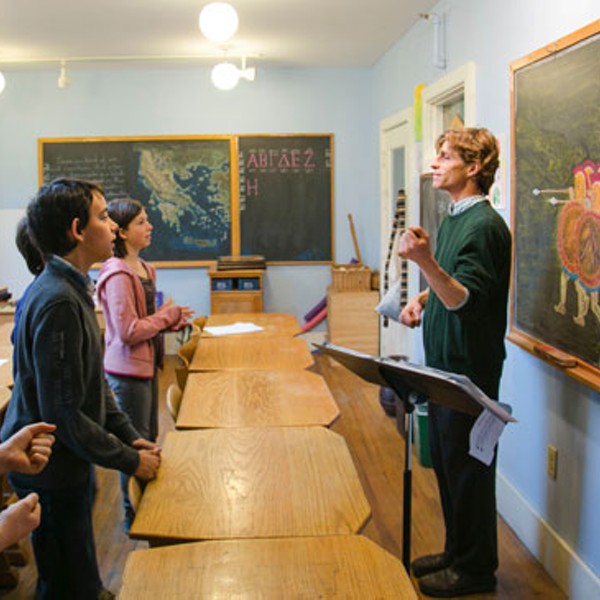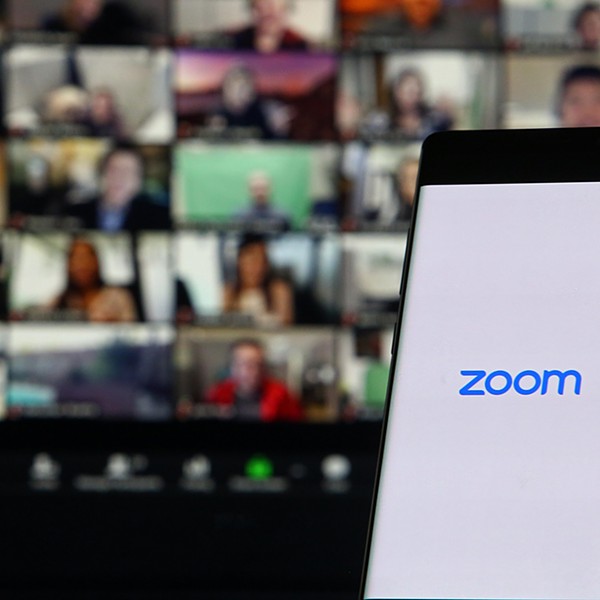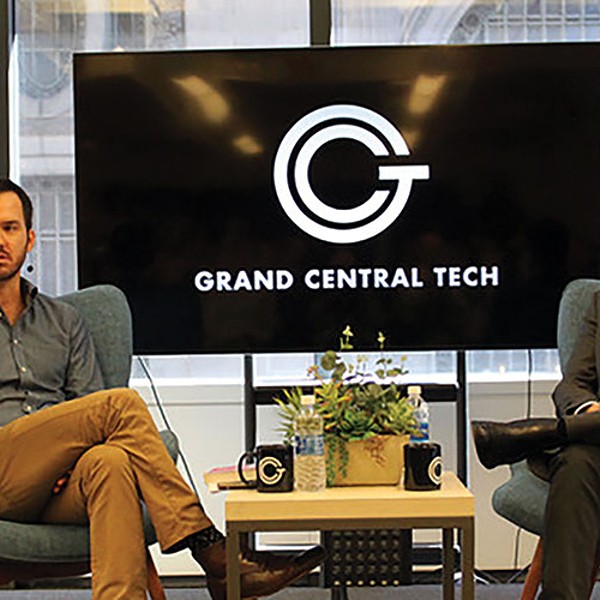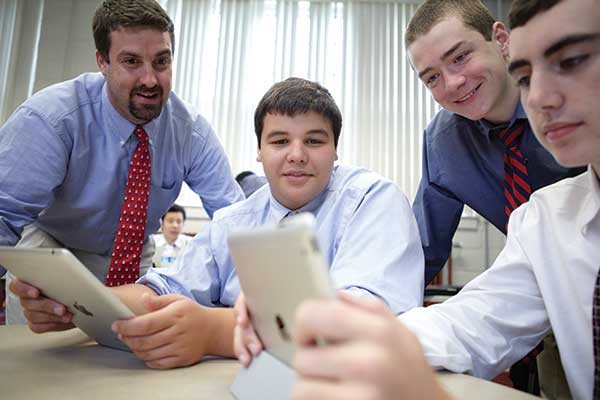
When the Rondout Valley Central School District approved the purchase of iPads for all 174 students in the high school freshman class last fall, some taxpayers pitched a fit. Was this some foolish extravagance? Could we truly trust the young with such things, not to mention in the wide-open spaces of the Internet?
District officials held their ground, and the iPad Pilot Project is well under way. In defense of the expenditure, educators pointed to the expense of providing hundreds of textbooks that, in today's world of rapid discoveries, are often inaccurate almost before the ink dries. And—especially given that Apple contracts with the New York State Office of General Services offer a discount on its wares to public schools—that's only one of many points in favor of the fully connective classroom.
Private schools, with no need to fret about political fallout, have enthusiastically embraced connectivity. "This is not an experiment," says Gonzalo Garcia-Pedroso, teacher and resident tech whiz at the venerable South Kent School in Connecticut. "It's evolution, and we need to keep evolving." South Kent launched an iPad program across all four grades in 2011, making its learning materials 92 percent digital, and Garcia-Pedroso (known as "Gonzo" to South Kent students) is having a blast.
"We're being invited all over the place to talk about this," he says. "Flying to one conference, I saw a seven-year-old Skyping with a grandparent from 30,000 feet up. What's that kid's baseline for using technology? We need to be ready for that kid."
At South Kent, paper textbooks have been all but eliminated in favor of digital versions, and the school newspaper is available as an app. But Garcia-Pedroso is quick to point out that it's not the spiffy hardware that makes the difference in itself. "I have seen iPad programs fail, because what's required is a new approach to the art of teaching. If the kids have iPads, the teacher can't just stand in front of the room and expect to stuff them with facts. They can find the facts just as quickly as the teacher can. The Internet demands that we teach students on a whole other level. It's not getting them to memorize what happened on December 7, it's more like 'How do you think Pearl Harbor impacted the course of history?' It's about integrating knowledge, not memorizing information. Teachers need to let go of the fear that a child might find out something before they do, or they'll lose them."
"When I've seen failure is when schools think, 'We need to have this, this is great,' but keep teaching the same old way instead of meeting the kids where they live. They try to keep up the old 'sage on the stage' concept. We still find a bit of that, but more often you'll see the teacher deep in the back of the classroom actively collaborating.
"Some of our graduates get to college and their instructors won't let them bring iPads into class, which they find sad. Other colleges look at the way our kids handle technology and all they want to know is, 'How'd you do that?' The solution is not the technology in itself, but in getting the teachers on board with a new way of teaching."
At Poughkeepsie Day School, iPads have not yet replaced texts entirely, but technology is ubiquitous—students made extensive use of it in organizing the recent Valley Needs the Galley collaborative project that benefited the Queens Galley's Kingston-based food security programs. Head of School Josie Holford wholeheartedly concurs with Garcia-Pedroso's take on the challenge and liberation of the Internet as teaching partner. "We never should have been in the business of trying to stuff kids with information in the first place, and now we can't be," she observes. "Facts and knowledge are free, right in their pockets. It's all in how you put it together," Holford says. "When the kids started Valley Needs the Galley, collaborating with students at other schools, they immediately made a Facebook page, started a Twitter feed, and made a movie—they're pulling together a whole lot of curricular subjects and using their laptops and cameras and smartphones to find the information they need to collaborate and to document their progress. It's amazing—but education is not 'all about computers' any more than it was all about pencils. If you're chopping down a tree, the best tool may be an axe—but it's about getting the tree chopped down, not about the axe itself."
Nailing Jello to a Tree
One cautionary note is sounded by Waldorf educators. At Great Barrington Rudolf Steiner School, computers are not used at all in the elementary grades, and policies are in place to discourage parents from allowing young children screen time. This is not, however, based on some reactionary loathing of technology or a belief that the Internet may be a passing fad. The concern is developmental. Steve Sagarin, currently faculty chair at the high school but formerly an administrator at the elementary level, admits that trying to keep even young kids away from technology is a challenge. "It's like trying to nail Jello to a tree," he says. "You can have a policy, but it's still up to each family to find their own way. But to portray us as anti-technology is a misconception. Look, communication has developed over thousands of years, from oral tradition to handwriting to the printing press and then to screens. We believe there are neurological benefits when individual children master all of those underlying methods too. Modern technology is revolutionary in a great and good way, but we see no big reason to hurry kids along that path." At the high school, Sagarin says, "they have absolutely no problem adjusting to using the technology, it's nearly instantaneous. But we believe in making sure they understand any technology as a tool to aid the thought process, not a substitute for it."
Michelle Hughes of High Meadow School in Stone Ridge agrees, albeit with a slightly different timeline. "We don't have the kids sitting in front of computers until fourth grade," she says. "Neurologists, occupational therapists, pediatricians—everyone agrees that for kids' language learning to be solid, they need to form that tactile connection first." That said, "Our kids are digital natives. We've thought long and hard about how we wanted it to look. But when we have the kids doing their in-depth intensive on whales, for example, they can track the real time migration of a whale pod. There's no comparison with the kind of research you can do in books. Knowledge keeps shifting and deepening—it's exciting, and it's happening on the Internet."
Technology as Tool, Not Answer
The use of technology in the classroom has evolved far past the stage of "if" to a matter of how and when, although educators are generally mindful of the kinds of questions being raised by Waldorf thinkers about development and social skills. "Research shows that interpersonal connections have a far greater impact on learning than just about anything else," says Anna Bertucci of Oakwood Friends School. "So we approach our integration of technology in teaching and learning with this in mind. How can technology enhance our work together and not isolate us as learners?" Some of Oakwood's answers: dedicated Ning chatrooms where students can discuss their college-level coursework, extensive collaboration with students around the globe in foreign language and service learning programs, pottery throwing demos in real time via webcam, and a robotics outreach program in which Oakwood students work with elementary level students on Lego MindStorms projects.
All of the educators interviewed for this article concur with Garcia-Pedroso about the challenge posed to pedagogy by technology, and say it's basically a beautiful thing. "It used to be that education was about a catalogue of information in order to raise informed citizens," says Hughes. "Now it's more about how to analyze and synthesize and become discerning users of information—how to prioritize, how to tell the difference between truth and baloney. We spend more time looking at the skills of learning itself and less time dispensing information, although there are still times for direct dispensing of information. Some people may still find it scary, but the task is getting kids to think analytically and critically, to synthesize information into knowledge. And that—that takes a teacher."
"It's what you make it," says Garcia-Pedroso. Besides their virtually endless list of tech achievements, South Kent just donated 20 iPads to the local public elementary, and first-year students also travel to local elementary schools to read aloud to students from paper books. "The world has changed, and this is how the world works. We want to teach them to leverage it in positive ways, to use it responsibly—one instance of bad decision-making online can destroy a kid's image—and to become producers, not just consumers. Now that we've got the iPad 2, they can actually produce—and are they ever! They're writing, filming, making multimedia. They can interact socially with their teachers right from their books at any time."
Teachers, however, are not and will never be replaceable—and especially for younger children, some things can never be digitized. "We build in a lot of sensory experience—we get outdoors and see, smell, hear real things," says Great Barrington Rudolf Steiner School teacher Nancy Franco. "We're human beings together on this planet—connecting to that is crucial. People who are concerned about getting children into technology as early as possible are forgetting that by the time these kids are in high school, they'll probably be working with entirely new technology. And we find that with a solid real world foundation, kids adapt to keyboards and screens almost instantaneously. We believe in approaching technology in a very conscious way."







